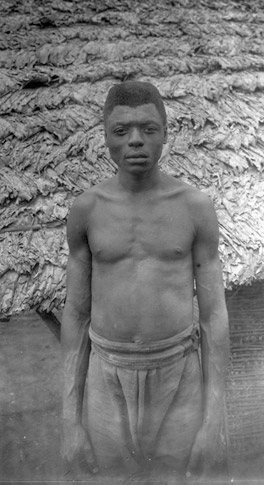RESISTANCE
 Simon Kimbangu, Simon Kimbangu,Bas-Congo, 1921 Unkwown photographer Coll. RMCA |
From the interwar period to the eve of Congo's independence, the colonial system meets with resistance. During all this time, the memory of the regime of King Leopold II and the violence associated with the rubber plantations remains vivid. In rural areas and industrial centres, the population rises up against racial segregation, forced labour, obligatory cash crop cultivation and harsh industrial working conditions. These protests sometimes involve leaders and educated men but are more often reactions of the masses. To oppose colonial practices, some people lean on Christianity, while others reject all things associated with colonial power, including Western clothing. These actions are not necessarily aimed at achieving political independence but are considered subversive by the colonial administration, all the more so because they are poorly understood. However, the actions of Simon Kimbangu, the crocodile men, the leopard men and others take place at the margins of society and remain too isolated to threaten colonial order. Nevertheless, they create fear and draw strong government reprisals. Simon Kimbangu is born in 1887 in Bas-Congo, where the Portuguese introduced Catholicism in the 15th century and the slave trade scarred the region. Baptized in 1915, Kimbangu becomes a Protestant catechist and opens his ministry of preaching and healing in 1921. His Messianism combines Christian and precolonial religious elements; his message is religious and social rather than political, but in 1921 a military tribunal condemns him to death. King Albert I commutes his sentence to life in prison, where he dies in 1951, in Elisabethville, far from his home. His 30 years in prison infuriates the population, who see Kimbangu as a martyr. His sons Joseph Diangienda and Charles Kisolokele, two 'évolués' employed by the colonial administration, fight for the recognition of the Kimbanguist Church, which is achieved on 24 December 1959 just before independence. |


